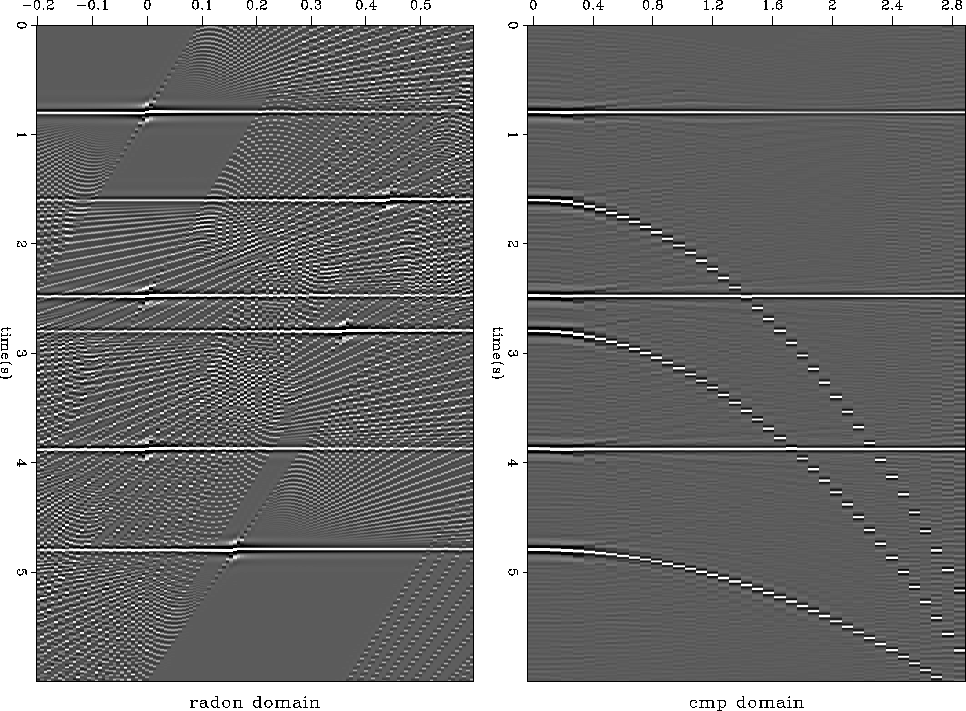




Next: antialiasing the parabolic radon
Up: Guitton: Operator/data aliasing
Previous: Guitton: Operator/data aliasing
The parabolic radon transform (PRT) is extensively used to
transform the data into a domain where multiples and primaries are separable.
This multiple-attenuation method proceeds as follows: the data are sorted in
common midpoint (CMP) gathers, flattened with a normal moveout (NMO)
correction, and then radon transformed. The multiples are
then muted in the radon domain and subtracted from the input data.
The final result depends heavily on the mapping of the primaries and multiples
in the radon domain.
The limited aperture of the recording geometry
and the spatial data sampling might considerably affect the
separability of primaries and multiples Kabir and Marfurt (1999).
This data sampling issue is called data aliasing. It causes many
artifacts that dramatically affect focusing in the radon domain
(Figure 2).
A second source of problem can stem from aliasing of the radon
transform operator. The operator aliasing creates noise in the radon domain
by the summation action of the PRT operator on the CMP gather
Abma et al. (1999); Lumley et al. (1994).
In this paper, I present solutions to correct for both operator and
data aliasing. We can antialias the operator by imposing
dip limitations on the summation path of the PRT. These dip limits
translate easily into frequency limits. I also show that when using inverse
theory, data-aliasing artifacts can be attenuated by imposing some
constraints on the sparseness of the radon domain.
datasynt
Figure 1 Left: A parabolic radon model
(s.km-2). Right: Data derived from the left panel using the PRT (offset in km).




 radon
radon
Figure 2 Left: The radon
domain obtained by applying the adjoint PRT  to the input data shown in
Figure 1. The straight lines are caused by the limited aperture of the recording
geometry. The other noisy events correspond to data-aliasing noise.
Right: Reconstructed data applying the forward operator L to the left panel.
to the input data shown in
Figure 1. The straight lines are caused by the limited aperture of the recording
geometry. The other noisy events correspond to data-aliasing noise.
Right: Reconstructed data applying the forward operator L to the left panel.










Next: antialiasing the parabolic radon
Up: Guitton: Operator/data aliasing
Previous: Guitton: Operator/data aliasing
Stanford Exploration Project
4/29/2001


